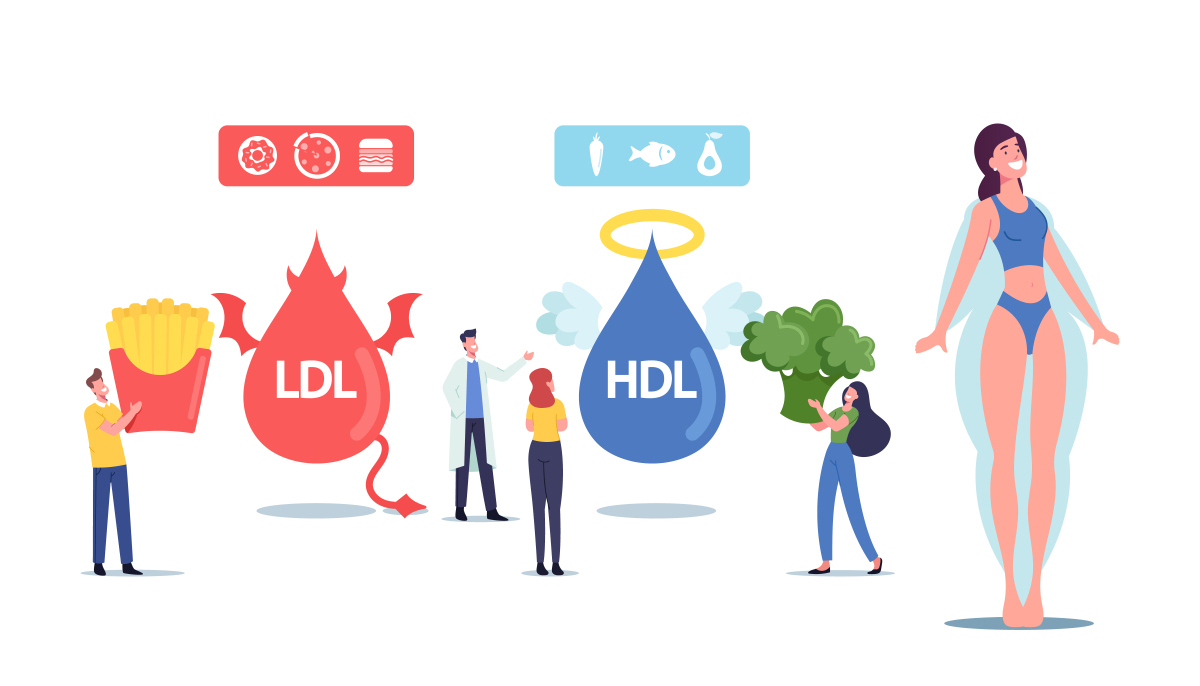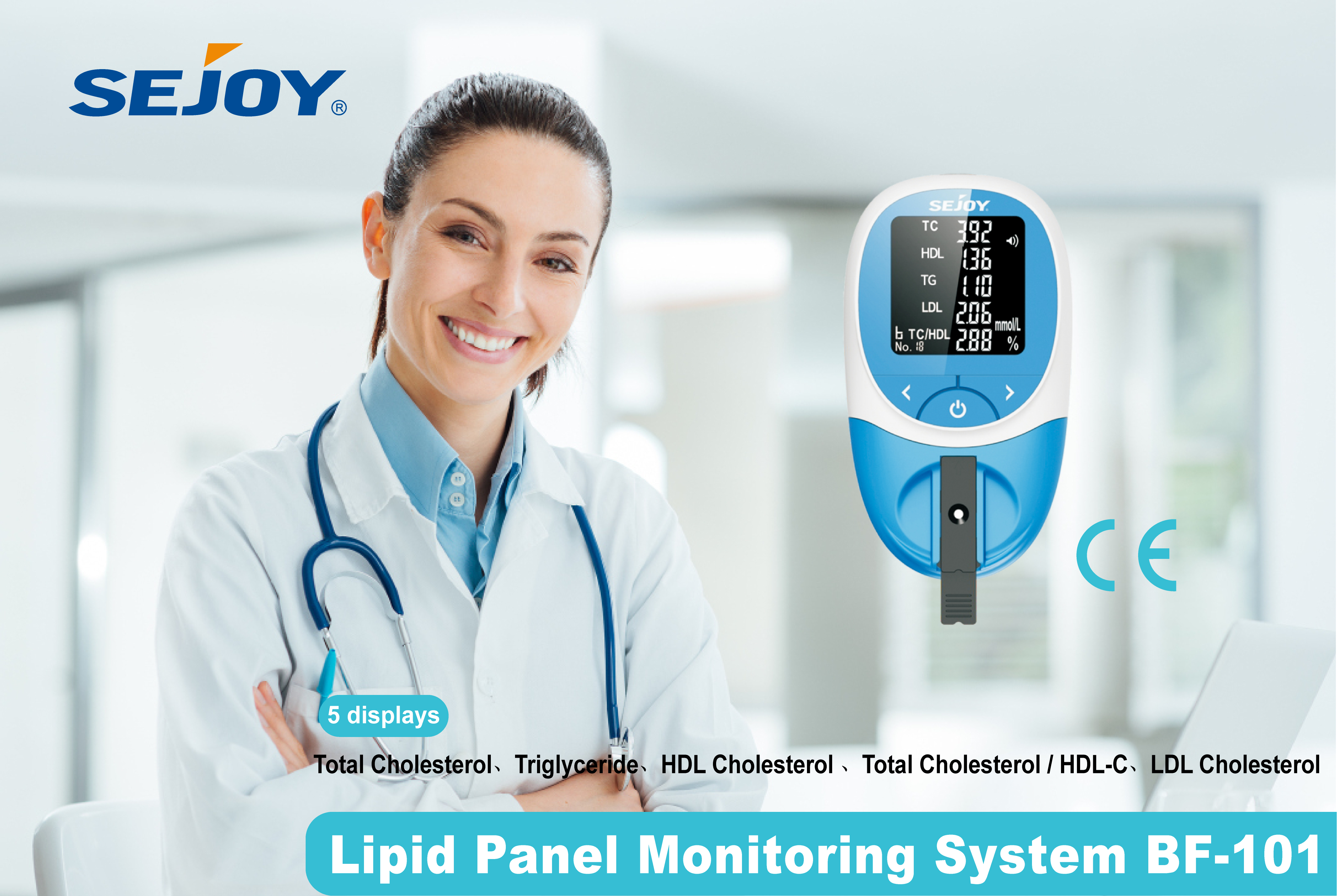According to the National Cholesterol Education Program (NCEP), the American Diabetes Association (ADA), and the CDC, the importance of understanding lipid and glucose levels is paramount in reducing healthcare costs and deaths from preventable conditions.[1-3]
Dyslipidemia is defined as an elevation of plasma cholesterol or triglycerides (TG), or both, or a low high-density lipoprotein (HDL) level that contributes to the development of atherosclerosis. Primary causes of dyslipidemia can include gene mutations that result either in overproduction or defective clearance of TG and low-density lipoprotein (LDL) cholesterol or in underproduction or excessive clearance of HDL. Secondary causes of dyslipidemia include sedentary lifestyle with excessive dietary intake of saturated fat and cholesterol.[4]
Cholesterol is a lipid found in all animal tissues, blood, bile, and animal fats that is essential for cell membrane formation and function, hormone synthesis, and fat-soluble vitamin production. Cholesterol travels through the bloodstream in lipoproteins.5 LDLs deliver cholesterol to cells, where it is used in membranes or for the synthesis of steroid hormones.6 An elevated LDL level leads to a buildup of cholesterol in the arteries.[5] Conversely, HDL gathers excess cholesterol from the cells and brings it back to the liver.[6] Elevated cholesterol in the blood can combine with other substances, resulting in plaque formation. TG are esters derived from glycerol and three-fatty acids generally stored in the fat cells. Hormones release TG for energy between meals. TG may raise the risk of heart disease and are considered a sign of metabolic syndrome; thus, lipid monitoring is important because uncontrolled dyslipidemia can lead to the development of coronary heart disease.[7]
Dyslipidemia is diagnosed using a serum lipid profile test.1 This test measures total cholesterol, HDL cholesterol, TG, and calculated LDL cholesterol.
Diabetes Mellitus
Diabetes mellitus is a chronic disease that is characterized by a dysfunction of the body’s use of insulin and glucagon. Glucagon is secreted in response to low glucose concentration, resulting in glycogenolysis. Insulin is secreted in response to food intake, causing cells to take up glucose from the blood and convert it to glycogen for storage.[8] A dysfunction in glucagon or insulin can lead to hyperglycemia. Diabetes may eventually damage the eyes, kidneys, nerves, heart, and blood vessels. There are many tests used to diagnose diabetes mellitus. Some of these tests include random blood glucose and fasting plasma glucose tests.[9]
Epidemiology
According to the CDC, 71 million American adults (33.5%) have dyslipidemia. Only 1 out of 3 people with high cholesterol has the condition under control. The average total cholesterol of adult Americans is 200 mg/dL.11 The CDC estimates that 29.1 million Americans (9.3%) have diabetes, with 21 million diagnosed and 8.1 million (27.8%) undiagnosed.[2]
Hyperlipidemia is a common “disease of wealth” in today’s society. In the past 20 years, it has developed into a worldwide high incidence. According to the WHO, Since the 21st century, an average of 2.6 million people have died of cardiovascular and cerebrovascular diseases (such as acute myocardial infarction and stroke) caused by long-term hyperlipidemia every year. The prevalence of hyperlipidemia in European adults is 54%, and about 130 million European adults have hyperlipidemia. The incidence of hyperlipidemia in the United States is equally severe but slightly lower than in Europe. The results show that 50 percent of men and 48 percent of women in the United States have hyperlipidemia. Hyperlipidemia patients are prone to cerebral apoplexy; And if the blood vessels in the eyes of the human body are blocked, it will lead to decreased vision, or even blindness; If it occurs in the kidney, it will cause the occurrence of renal arteriosclerosis, affecting the normal kidney function of the patient, and the occurrence of renal failure. If it occurs in the lower extremities, necrosis and ulcers may occur. In addition, high blood lipids may also cause complications such as hypertension, gallstones, pancreatitis and senile dementia.
REFERENCES
1. Third Report of the National Cholesterol Education Program (NCEP) Expert Panel on Detection, Evaluation, and Treatment of High Blood Cholesterol in Adults (Adult Treatment Panel III) final report. Circulation. 2002;106:3143-3421.
2. CDC. 2014 National Diabetes Statistics Report. October 14, 2014. www.cdc.gov/diabetes/data/statistics/2014statisticsreport.html. Accessed July 20, 2014.
3. CDC, Division for Heart Disease and Stroke Prevention. Cholesterol fact sheet. www.cdc.gov/dhdsp/data_statistics/fact_sheets/fs_cholesterol.htm. Accessed July 20, 2014.
4. Goldberg A. Dyslipidemia. Merck Manual Professional Version. www.merckmanuals.com/professional/endocrine_and_metabolic_disorders/lipid_disorders/dyslipidemia.html. Accessed July 6, 2014.
5. National Heart, Lung, and Blood Institute. Explore high blood cholesterol. https://www.nhlbi.nih.gov/health/health-topics/topics/hbc/. Accessed July 6, 2014.
6. University of Washington courses web server. Cholesterol, lipoproteins and the liver. http://courses.washington.edu/conj/bess/cholesterol/liver.html. Accessed July 10, 2014.
7. Mayo Clinic. High cholesterol. www.mayoclinic.org/diseases-conditions/high-blood-cholesterol/in-depth/triglycerides/art-20048186. Accessed June 10, 2014.
8. Diabetes.co.uk. Glucagon. www.diabetes.co.uk/body/glucagon.html. Accessed July 15, 2014.
9. Mayo Clinic. Diabetes. www.mayoclinic.org/diseases-conditions/diabetes/basics/tests-diagnosis/con-20033091. Accessed June 20, 2014.
Post time: Jun-17-2022




